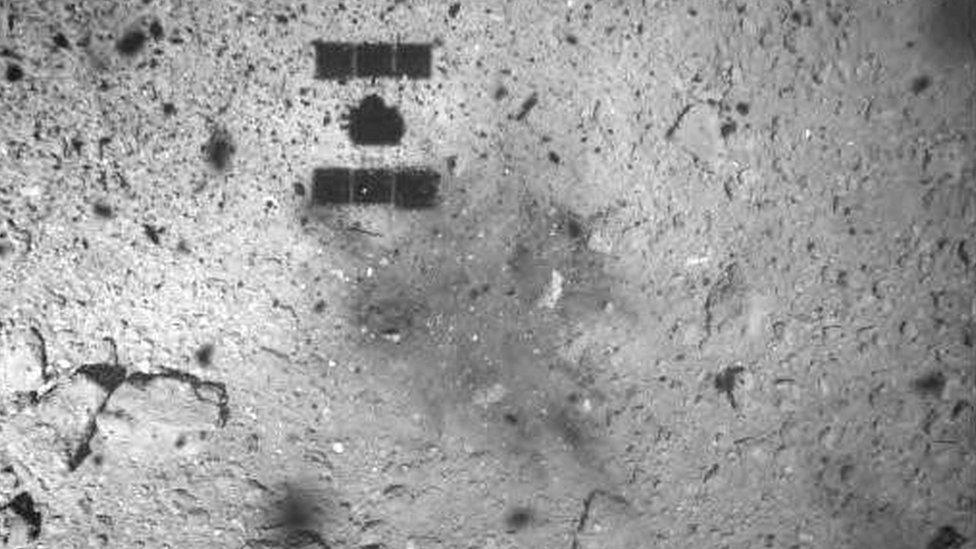Hayabusa-2: Japanese spacecraft makes final touchdown on asteroid
- Published
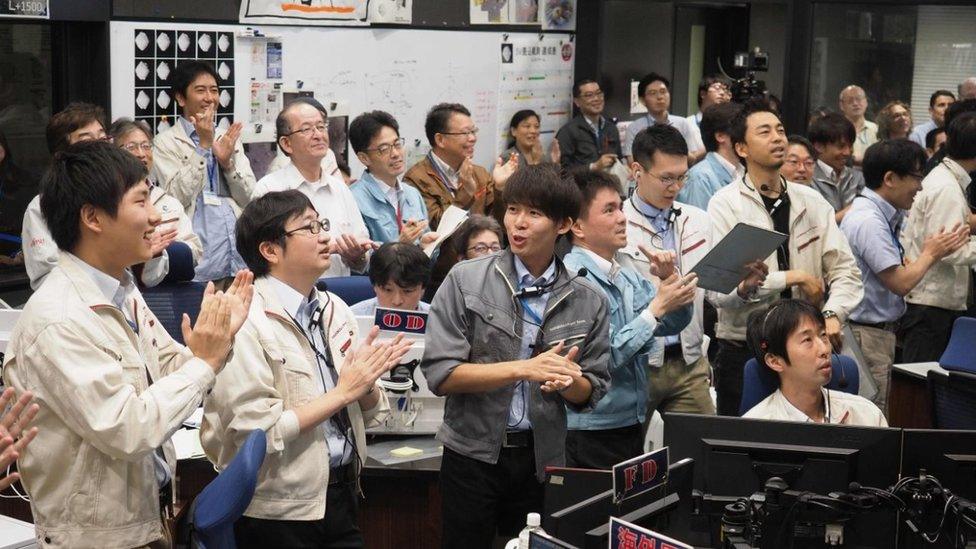
Staff and researchers from Japan's space agency, JAXA, celebrate in the mission control room
A Japanese spacecraft has touched down on a faraway asteroid, where it will collect space rock that may hold clues to how the Solar System evolved.
The successful contact with the Ryugu asteroid was met with relief and cheering in the control room at Japan's space agency, JAXA.
It is the second touchdown for the robotic Hayabusa-2 craft, which grabbed rocks from the asteroid in February.
After blasting a crater into Ryugu, it has returned to pick up fresh rubble.
As the samples will come from within the asteroid, they will have had reduced exposure to the harsh environment of space.
It's hoped the rock will give scientists more data on the origins of the Solar System.
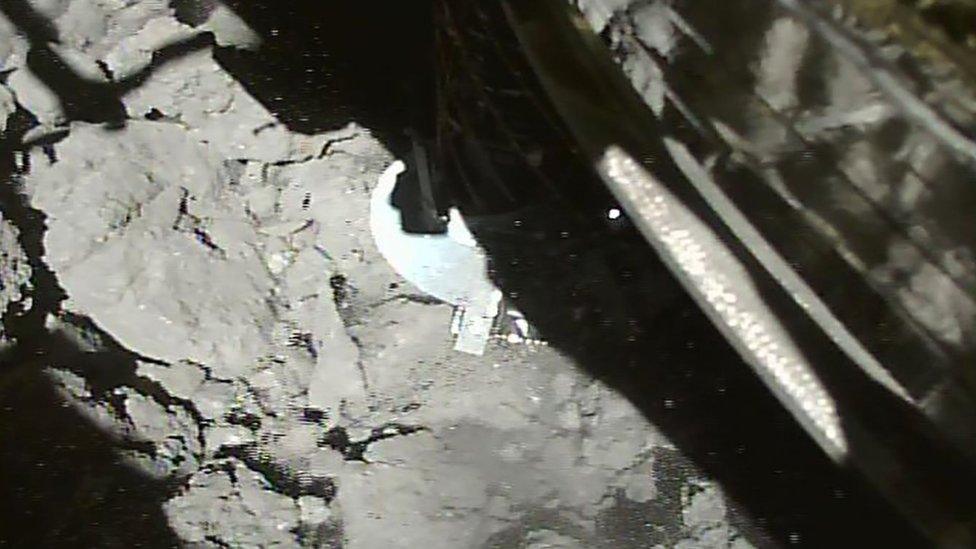
This picture from JAXA shows Hayabusa-2 making contact with the asteroid's surface
Hayabusa-2 is due to bring the specimens back to Earth next year.
Left over from 4.5 billion years ago
Ryugu belongs to a particularly primitive type of space rock, left over from the early days of our Solar System.
It may therefore contain clues about the conditions and chemistry of that time - some 4.5 billion years ago.
Hayabusa-2 started its mission to reach Ryugu in 2014, launching from Japan's space port Tanegashima.
The asteroid is a 900m-wide space rock, about 290 million km (180 million miles) from Earth.
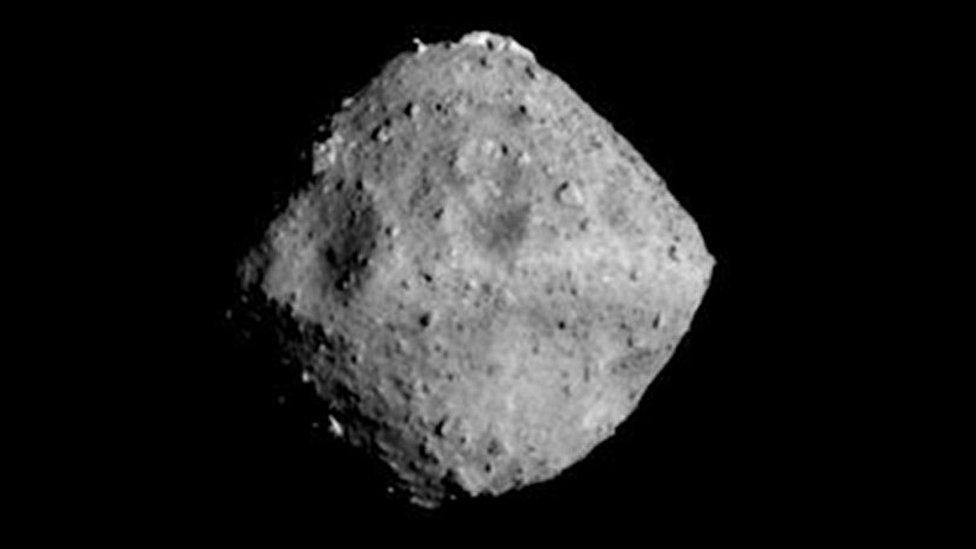
Ryugu holds key clues into the origin of the Solar System
Asteroids are essentially leftover building materials from the formation of the Solar System.
It's also thought they may contain chemical compounds that could have been important for kick-starting life on Earth.
They can contain water, organic (carbon-rich) compounds and precious metals.
The last of those has even tempted several companies to look into the feasibility of asteroid mining.
- Published11 July 2019
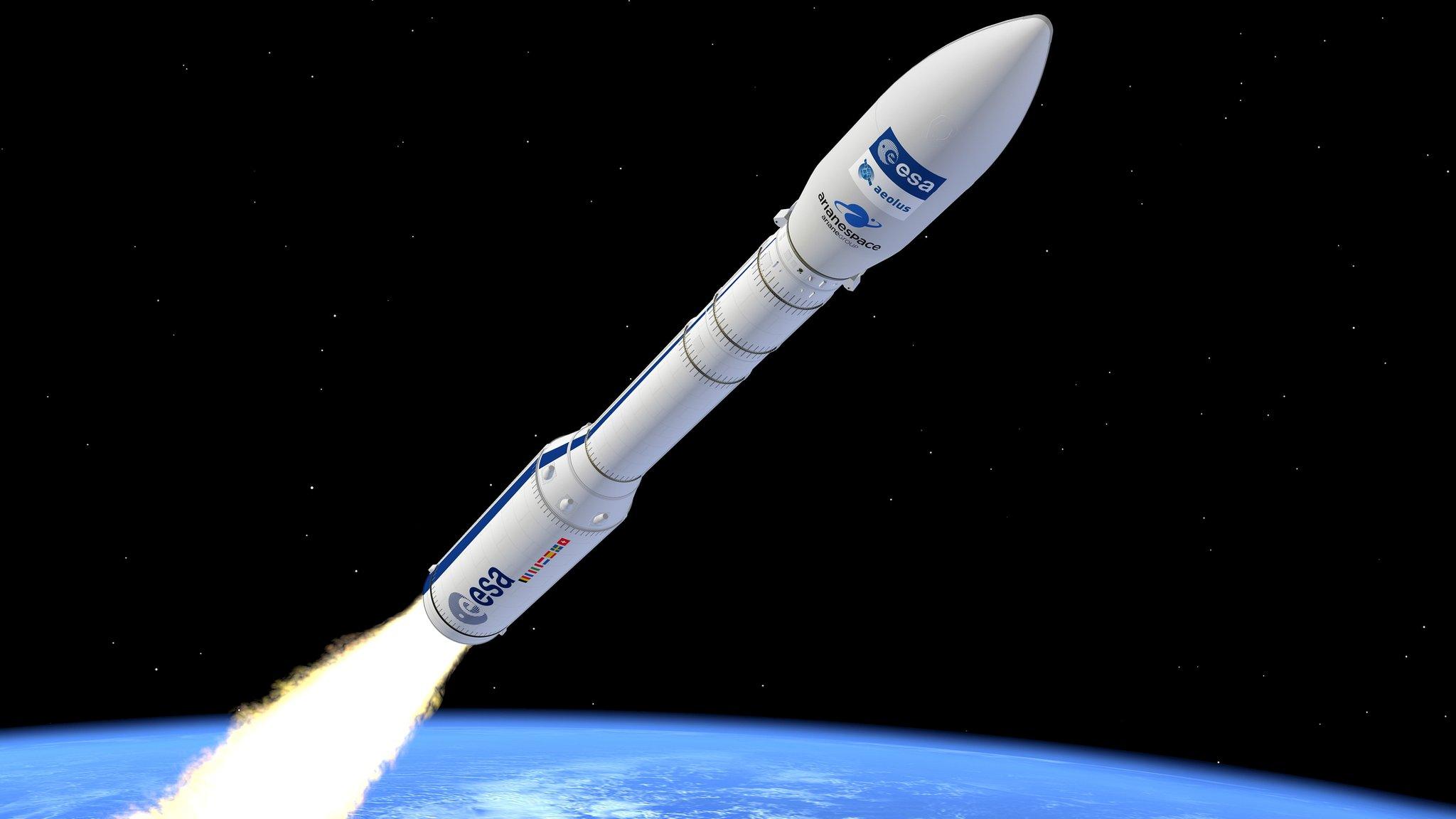
- Published26 April 2019

- Published5 April 2019

- Published25 February 2019
